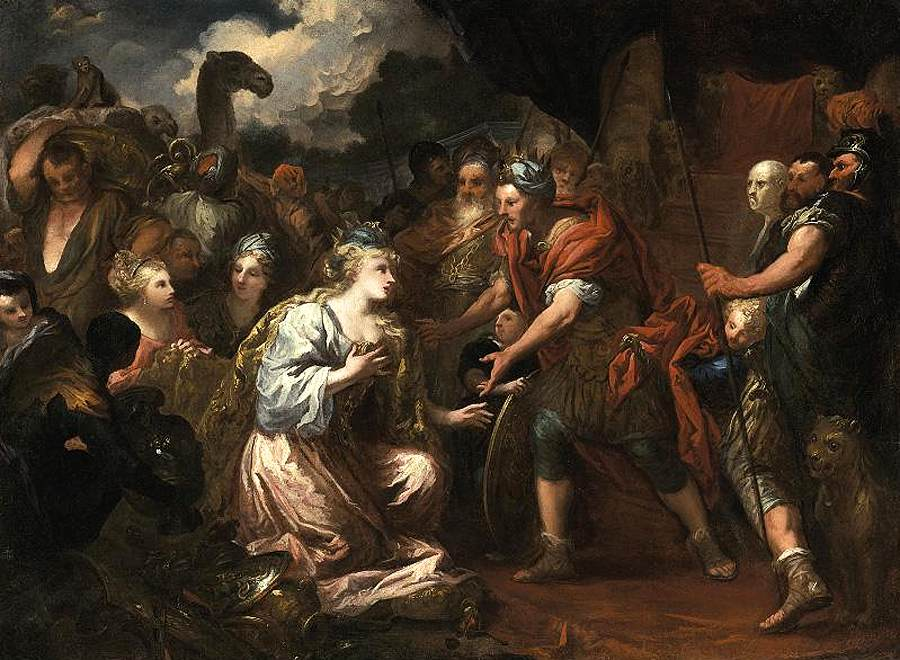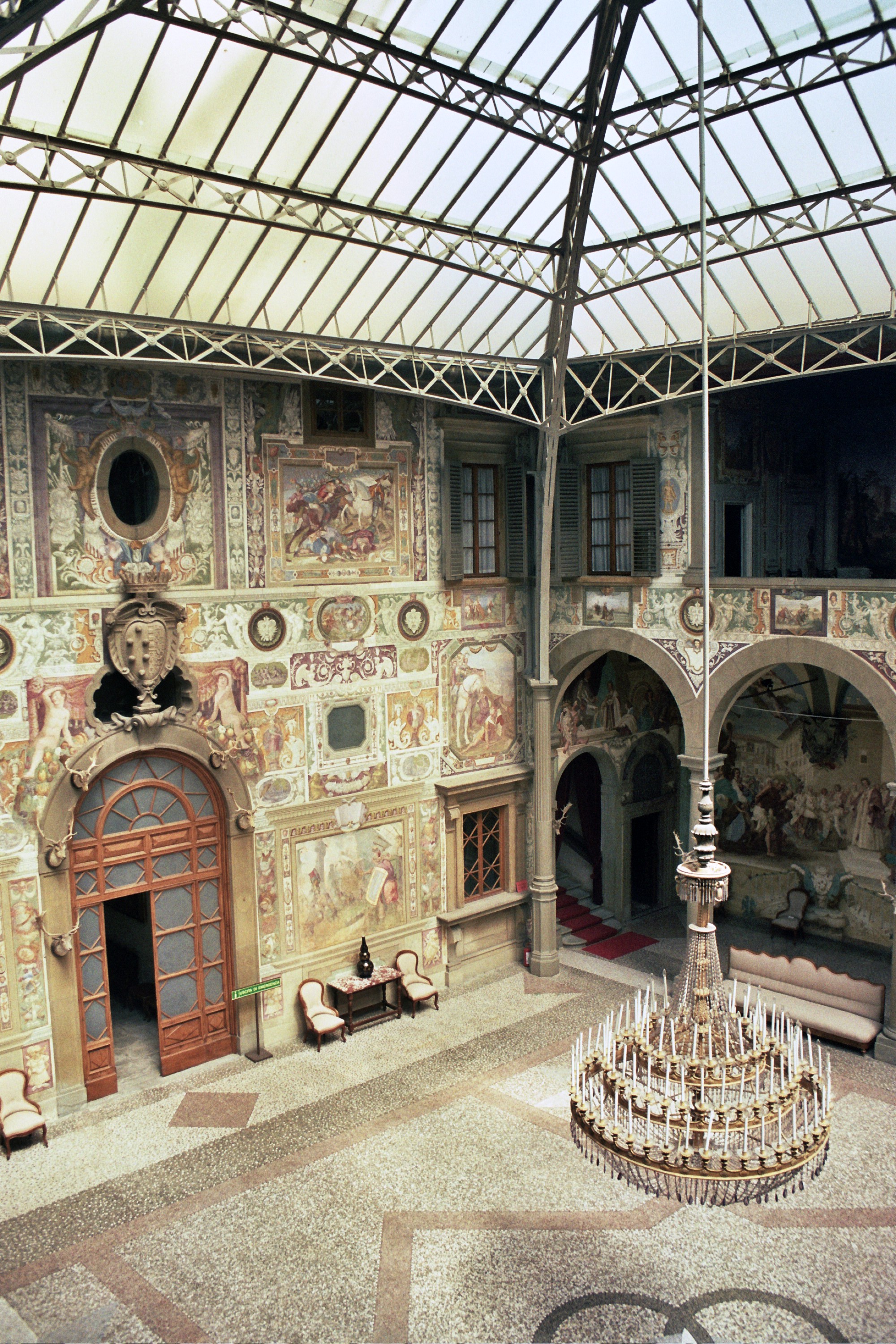|
Pietro Dandini
Pietro Dandini (12 April 1646 – 26 November 1712) was an Italian painter of the Baroque period, active mainly in Florence. Biography He is also called ''Pier Dandini''. He was the son (or nephew) and pupil of the painter Vincenzo Dandini. Pietro's uncle, Cesare Dandini, was a prominent painter in Florence. Vincenzo's sons, Ottaviano and Vincenzo Dandini the younger also became painters. Among his pupils as Valerio Baldassarri of Pescia, Father Alberico Carlini of Vellano, Gaetano Santarelli Giovanna Fratellini, and Giovanni Cinqui. In addition to having training within the family, he traveled to Bologna, Modena, Venice, and Rome to learn about art. Pellegrino Antonio Orlandi, Bolognese, 1723, page 365. As a painter, Dandini's styles are eclectic, as reflected in his travels, though he has the high-minded graciousness ... [...More Info...] [...Related Items...] OR: [Wikipedia] [Google] [Baidu] |
Ralph Nicholson Wornum
Ralph Nicholson Wornum (1812–1877) was a British artist, art historian and administrator. He was Keeper and Secretary of the National Gallery of London from 1855 until his death. Early life He was the son of Robert Wornum the pianoforte maker, and was born at Thornton, near Norham, Northumberland, on 29 December 1812. Having studied at University College London in 1832, he gave up plans to read for the bar, and attended the studio of Henry Sass. In 1834 he went abroad, spending six years in visiting galleries, in Munich, Dresden, Rome, Florence, and Paris. Art and design in London At the end of 1839 Wornum settled in London as a portrait-painter. Thomas Sibson came to study with him. He was honourably mentioned in the Westminster Hall cartoon competition of 1840. In 1848 Wornum was appointed lecturer on art to the government schools of design, and lectured around England. Among his topics was Islamic design, and he suggested that his students should visit Owen Jones's reconstr ... [...More Info...] [...Related Items...] OR: [Wikipedia] [Google] [Baidu] |
San Gaetano, Florence
San Gaetano, also known as Santi Michele e Gaetano, is a Baroque church in Florence, Italy, located on the Piazza Antinori, entrusted to the Institute of Christ the King Sovereign Priest. History A Romanesque architecture, Romanesque church, dedicated solely to ''Saint Michael the Archangel'', had been located at the site for centuries prior to its Baroque reconstruction. Patronized by the Theatine order, the new church was dedicated to Saint Cajetan, one of the founders of the order, though the church could not formally be named after him until his canonisation in 1671. Funding for this reconstruction was obtained from the noble families in Florence, including the Medicis. Cardinal Carlo de' Medici was particularly concerned with the work, and his name is inscribed on the façade. Building took place between 1604 and 1648. The original designs were by Bernardo Buontalenti but a number of architects had a hand in building it, each of whom changed the design. The most important ar ... [...More Info...] [...Related Items...] OR: [Wikipedia] [Google] [Baidu] |
San Gimignano
San Gimignano () is a small walled medieval hill town in the province of Siena, Tuscany, north-central Italy. Known as the Town of Fine Towers, San Gimignano is famous for its medieval architecture, unique in the preservation of about a dozen of its tower houses, which, with its hilltop setting and encircling walls, form "an unforgettable skyline". Within the walls, the well-preserved buildings include notable examples of both Romanesque and Gothic architecture, with outstanding examples of secular buildings as well as churches. The Palazzo Comunale, the Collegiate Church and Church of Sant' Agostino contain frescos, including cycles dating from the 14th and 15th centuries. The "Historic Centre of San Gimignano" is a UNESCO World Heritage Site. The town also is known for saffron, the Golden Ham, and its white wine, Vernaccia di San Gimignano, produced from the ancient variety of Vernaccia grape which is grown on the sandstone hillsides of the area. Territory The municipality ... [...More Info...] [...Related Items...] OR: [Wikipedia] [Google] [Baidu] |
San Jacopo Soprarno, Florence
San Jacopo sopr'Arno is a church in Florence, Italy. The church was built in the 10th–11th centuries in Romanesque style. It subsequently experienced heavy modifications including the addition of a triple-arched portico. According to the Renaissance art historian Giorgio Vasari, Filippo Brunelleschi built here a chapel, the Ridolfi Chapel, in which he studied, in smaller scale, architectural elements later used in his famous dome of Santa Maria del Fiore. The chapel is now destroyed. Since 1542 it was held by Franciscans of the Minorite Order. The entrance portico was remade by order of Cosimo I de' Medici in 1580, using the architect Bernardino Radi. The bell tower was designed by Gherardo Silvani in 1660. The church was damaged when the Arno River flooded Florence in 1966. Repairs of the church after flood led to the restoration of some of the historical architectural features, and the discovery of columns belonging to the original Romanesque church in the Baroque interior. ... [...More Info...] [...Related Items...] OR: [Wikipedia] [Google] [Baidu] |
Palazzo Montecitorio
The Palazzo Montecitorio () is a palace in Rome and the seat of the Chamber of Deputies, the lower house of the Italian Parliament. History The palace's name derives from the slight hill on which it is built, which was claimed to be the ''Mons Citatorius'', the hill created in the process of clearing the Campus Martius in Roman times. The building was originally designed by Gian Lorenzo Bernini for the young Cardinal Ludovico Ludovisi, nephew of Pope Gregory XV. However, with the death of Gregory XV by 1623, work stopped, and was not restarted until the papacy of Pope Innocent XII (Antonio Pignatelli), when it was completed by the architect Carlo Fontana, who modified Bernini's plan with the addition of a bell gable above the main entrance. The building was designated for public and social functions only, due to Innocent XII's firm antinepotism policies which were in contrast to his predecessors. In 1696 the Curia apostolica (papal law courts) was installed there. Later it w ... [...More Info...] [...Related Items...] OR: [Wikipedia] [Google] [Baidu] |
Francesco Saverio Baldinucci
Francesco, the Italian (and original) version of the personal name "Francis", is the most common given name among males in Italy. Notable persons with that name include: People with the given name Francesco * Francesco I (other), several people * Francesco Barbaro (other), several people * Francesco Bernardi (other), several people *Francesco di Giorgio Martini (1439-1501), Italian architect, engineer and painter * Francesco Berni (1497–1536), Italian writer * Francesco Canova da Milano (1497–1543), Italian lutenist and composer * Francesco Primaticcio (1504–1570), Italian painter, architect, and sculptor * Francesco Albani (1578–1660), Italian painter * Francesco Borromini (1599–1667), Swiss sculptor and architect * Francesco Cavalli (1602–1676), Italian composer * Francesco Maria Grimaldi (1618–1663), Italian mathematician and physicist * Francesco Bianchini (1662–1729), Italian philosopher and scientist * Francesco Galli Bibiena (1659 ... [...More Info...] [...Related Items...] OR: [Wikipedia] [Google] [Baidu] |
Palazzo Corsini, Florence
The Palazzo Corsini is a monumental palace located on Via del Parione #11, with a facade towards the Arno River, in Florence, region of Tuscany, Italy. History The site had been appropriated from the Ardinghelli family prior to the 17th century by the Medicis, who built a casino, a small house with gardens extending to the river. In 1649, it was purchased by Maria Maddalena Macchiavelli, the wife of the Marchese Filippo Corsini, from the Grand Duke Ferdinando II de’ Medici. The palace was constructed during the mid-17th to the 18th centuries, built with one side having U-shape wings facing the Arno to give maximum view of the river. The initial architects were Alfonso Parigi the Younger, followed by Ferdinando Tacca until 1671. Completing the massive structure was Antonio Maria Ferri. The interiors are elegantly frescoed. The artists include Anton Domenico Gabbiani, Alessandro Gherardini and Pier Dandini. The two storey throne room, designed by Ferri during 1694-1696, co ... [...More Info...] [...Related Items...] OR: [Wikipedia] [Google] [Baidu] |
Villa La Petraia
Villa La Petraia is one of the Medici villas in Castello, Florence, Tuscany, central Italy. It has a distinctive 19th century belvedere on the upper east terrace on axis with the view of Florence. History In 1364, the "palace" of Petraia belonged to the family Brunelleschi until in 1422 Palla Strozzi bought it and expanded it by buying the surrounding land. In the first half of the sixteenth century, the villa became the property of the Salutati, who then sold the villa to Cosimo I de' Medici in 1544, who gave it to his son, Cardinal Ferdinando in 1568. Then from 1588, there was a decade of extensive excavation works which transformed the "stony" nature of the place (hence the name in Petraia, that is full of stones) into dramatic sequence of terraces dominated by the massive main building. It is traditionally attributed to Bernardo Buontalenti, even though the only documented certainty is the presence on site of Raphael Pagni. The Villa remained in the ownership of the Medi ... [...More Info...] [...Related Items...] OR: [Wikipedia] [Google] [Baidu] |
Vinci, Italy
Vinci ( , ) is a city in the Italian region of Tuscany and ''comune'' of the Metropolitan City of Florence. The birthplace of Renaissance polymath Leonardo da Vinci lies just outside the town. Main sights * Museo Leonardiano, museum of Leonardo da Vinci. This museum has displays of some of the inventions that are drawn in Leonardo's notebooks. *Casa Natale di Leonardo, the birthplace of Leonardo da Vinci, situated approximately 3 km to the northeast of Vinci in the frazione of Anchiano. There are some reproductions of his drawings at the house. *Church of Santa Croce, built in the 13th century but later remade in neo-Renaissance style. Twin towns Vinci has two official sister cities as designated by Sister Cities International: * Allentown, USA * Amboise Amboise (; ) is a commune in the Indre-et-Loire department in central France. Today a small market town, it was once home of the French royal court. Geography Amboise lies on the banks of the river Loire, east of Tours. ... [...More Info...] [...Related Items...] OR: [Wikipedia] [Google] [Baidu] |
Prato
Prato ( , ) is a city and ''comune'' in Tuscany, Italy, the capital of the Province of Prato. The city lies in the north east of Tuscany, at the foot of Monte Retaia, elevation , the last peak in the Calvana chain. With more than 200,000 inhabitants, Prato is Tuscany's second largest city (after Florence) and the third largest in Central Italy (after Rome and Florence). Historically, Prato's economy has been based on the textile industry and its district is the largest in Europe. The textile district of Prato is made up of about 7000 fashion companies, obtaining around 2 billion euros from exports. The renowned Datini archives are a significant collection of late medieval documents concerning economic and trade history, produced between 1363 and 1410. The city boasts important historical and artistic attractions, with a cultural span that started with the Etruscans and then expanded in the Middle Ages and reached its peak with the Renaissance, when artists such as Donatell ... [...More Info...] [...Related Items...] OR: [Wikipedia] [Google] [Baidu] |



